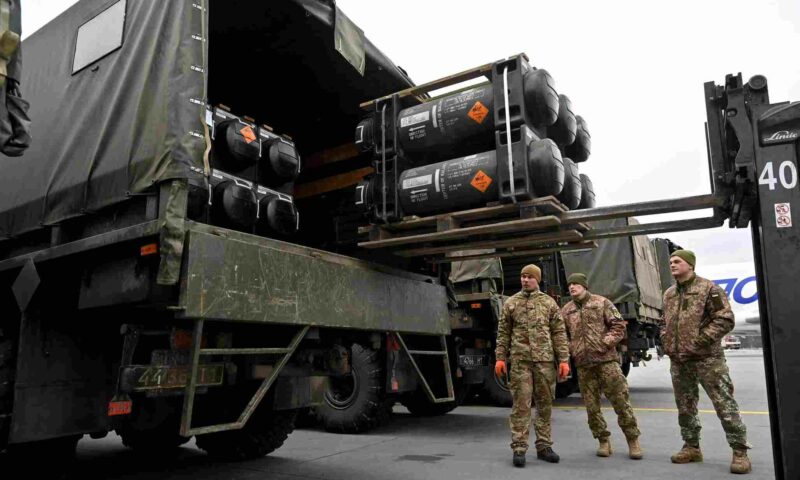By Spy Uganda Correspondent
Some of Moscow’s most high-tech hypersonic missiles were used in Russian attacks overnight on Ukraine, in which 81 missiles were launched, Kyiv’s military said Thursday morning.
In what Ukrainian President Volodymyr Zelensky called a “massive” wave of strikes across the country, 28 were carried out with Kh-101 or Kh-555 air-launched cruise missiles, Ukraine’s General Staff of the Armed Forces said.
There were also 20 Kalibr sea-launched cruise missiles, six Kh-22 anti-ship cruise missiles, two Kh-31 anti-ship missiles and six Kh-59 guided surface-to-air missiles. Five people were killed in the western Lviv region, and another person died in the southeastern Dnipropetrovsk region, Ukrainian officials said. Iranian-made Shahed-136 and -131 drones were also used, Ukrainian authorities said.
But Ukraine was also struck with six-winged Kh-47 “Kinzhal” air-launched missiles, the General Staff said.
Ukraine is not able to intercept the hypersonic Kinzhals, which have not been extensively used by Russian forces in Ukraine. The first known use of “Kinzhal” missiles in Ukraine was thought to be in March 2022 in western Ukraine.
Russian Defense Minister Sergei Shoigu said in August 2022 that the “Kinzhal” had been used three times in Ukraine by that point, according to state media.
Confirming the number of Kinzhals fired, Yuriy Ihnat, Ukraine’s air force spokesperson, said on Thursday that this was the “first time” Russia had used “so many different types of missiles.”
The Kh-47M2 “Kinzhal”—also known by its NATO label “Killjoy”—is a hypersonic air-launched ballistic missile, capable of carrying a nuclear warhead. The eight-meter-long missile (about 26 feet) can carry a payload of up to 480kg (just over 1,000 pounds) and has a range of up to around 1,250 miles, according to the Center for Strategic and International Studies think tank, based in the U.S.
It is designed to be launched from MiG-31 fighter jets and is thought to be a modified version of an Iskander-M ground-launched missile.
Russian state television host Vladimir Solovyov previously boasted in a broadcast that the “Kinzhal” missiles could reach London in nine minutes after a potential launch from Belarus.
The “Kinzhal” is “the leader of a new generation of Russian ‘super weapons’ which were developed specifically as a counter to improved U.S. anti-missile defenses,” said military and technology expert David Hambling. Back in 2018, Russian President Vladimir Putin lauded the “Kinzhals” as giving “serious advantages in the sphere of the armed struggle,” Russian news agency Tass reported.
It is “extremely difficult” to intercept because of its ability to maneuver at hypersonic speeds, he told Newsweek. This is its advantage over fast but predictable ballistic missiles and the slower, agile cruise missiles, he said.
In the wake of the strikes, Ukraine’s Defense Ministry appealed for further air defense systems from its Western backers, sharing images of the destruction wrought by the missiles.
“This is the first time we have seen ‘Kinzhals’ used in these numbers,” he added. An expensive and scarce resource for Russia, it is hard to tell whether this is an indicator that further “Kinzhal” strikes are on their way, he argued. But it is a possibility—as Russia starts to run out of missile stocks, Moscow will likely look for “previously hoarded” alternative capabilities, Hambling said.
Russia has long targeted Ukraine’s energy and civilian infrastructure through missile and drone strikes.
Zelensky said in a Telegram post that strikes on critical infrastructure and residential buildings had been reported across Ukraine. Regions targeted included Lviv, to the west of Ukraine, as well as Odesa and Zaporizhzhia to the south, and the capital, Kyiv.
Russia clearly intends to do “serious damage to Ukrainian infrastructure” through missile strikes, Hambling said. Yet civilian or energy infrastructure is an unexpected target for Russia’s prized hypersonic missiles, he suggested.
“Typically, you would expect a high-tech, high-value missile like Kinzhal to be used on a significant military target such as a headquarters or ammunition dump, not an electricity substation,” he said.
In November 2022, the British Defense Ministry said Russia had “occasionally” used the “Kinzhals” over the course of the Ukraine war, “but stocks are likely very limited.”
But Russia “continues to expand its advanced long-range munitions against targets of limited operational importance,” the government department said at the time.





